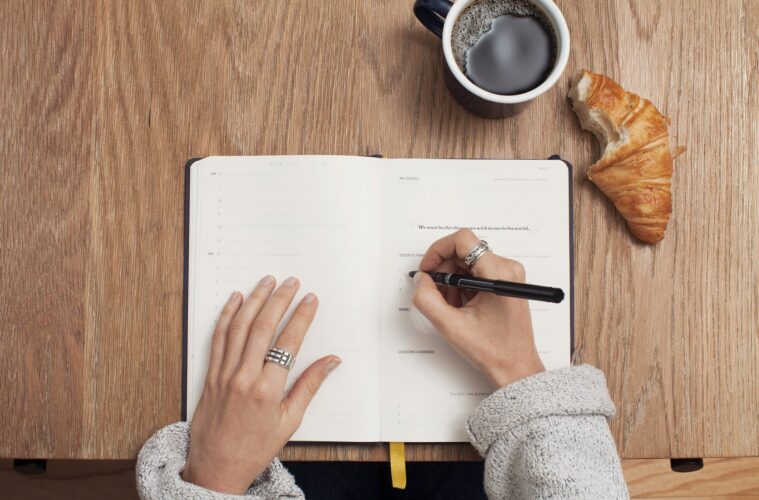Using a student planner is one of the best ways to help students stay organised, manage their time, and ultimately achieve greater academic success. Planners provide students with the necessary tools to keep track of assignments, manage their workload, and develop essential time-management and organisational skills. For both students and teachers, incorporating student planners into the classroom offers numerous benefits.
What is a Student Planner and How Does it Help Students?
A student planner is a tool, typically in calendar form, that helps students organise school work, assignments, projects, tests, activities and other important dates for school. Student planners allow students to easily see all their obligations in one spot so they know what work they need to complete day-by-day and week-by-week.
Planners are an important tool that enables students to develop essential organisational skills. They help students learn to plan out their days and weeks so they can better manage their workload. Using a planner can benefit students by:
- Improving time-management and organisation
- Teaching effective planning
- Reducing procrastination
- Keeping track of deadlines
- Recording assignments and key details
- Increasing productivity
By providing structure and oversight of a student’s responsibilities, a student planner makes learning easier. Students are far more likely to remember due dates, finish assignments on time, and ultimately find greater academic success.
5 Key Benefits of Student Planners
Here are 5 of the main benefits that student planners provide:
1. Improve Time Management and Organisation
One of the biggest benefits of student planners is that they help students manage their time and stay organised. The digital world provides students with many distractions and makes it difficult for them to stay on top of schoolwork. A physical planner allows them to easily see all their obligations in one spot. Having all of their assignments, projects, test dates, etc. documented in the planner helps students know what work they need to complete each day and provides them more incentive to actually complete their work. This reduces the desire to procrastinate.
2. Increase Productivity
Procrastination is a big problem amongst students, and having a planner helps reduce procrastination so students can work more efficiently. Documenting smaller tasks and to-do items helps students avoid feeling overwhelmed. And being able to check off completed tasks gives students a sense of progress. Using a planner reinforces staying on top of assignments so students don’t fall behind.
3. Improve Grades and Academic Performance
There is a strong correlation between planner usage and academic success. Students who use planners are far more organised when it comes to completing assignments on time and preparing for tests. A planner allows students to better manage their schoolwork and timetable. This leads to better grades and improved academic performance. Teachers should encourage all students to use planners.
4. Develop Essential Skills
Consistently using a student planner helps students build invaluable organisation and time management skills that benefit them throughout their education and into adult life. Learning how to use tools like calendars, to-do lists, etc. at a young age helps students develop critical skills for managing deadlines and tasks that set them up for future success. Young students learn how to schedule out their days and weeks while older students can use their planner for tracking school assignments as well as extracurricular activities.
5. Promote Student Responsibility and Independence
Student planners allow students to take ownership over their schedules and schoolwork. Maintaining a planner teaches students how to more effectively budget their time, set goals, and take responsibility for their own learning. This promotes student accountability as students are in charge of recording all details and deadlines. Student planners give students the tools to manage their own schedules and assignments. This leads to more independent and successful students.
Best Practices for Using Student Planners
While student planners offer many fantastic benefits, they need to be used consistently and correctly for students to gain the most value. Here are some best practices for incorporating student planners:
- Have parents, teachers, and students coordinate to ensure alignment and consistent use
- Take time to teach students best practices for planner usage
- Encourage students to record all school assignments and key details
- Use colour-coding to categorise classes, activities, tests, etc.
- Block off dedicated time for students to update their planners
- Set reminders to encourage frequent student engagement
- Consider both paper planners and digital planners
- Use planners for modelling and teaching organisation/planning
The key is consistency. Students who regularly write in their planners are far more likely to stay on top of schoolwork compared to non-planner users. Finding a planner style and system that works best for each individual student is important.
The Takeaway
Student planners serve as one of the best tools to help students organise their schoolwork, manage their time, reduce procrastination, and develop essential academic skills that set students up for success. Teachers should encourage all students to actively use a student planner. Consistent planner usage has a strong correlation with improved academic performance. Services like Studyo even offer full-featured student planners tailored specifically to promote student learning, organisation, productivity, and success. Helping students stay on track leads to better outcomes for both students and teachers.





